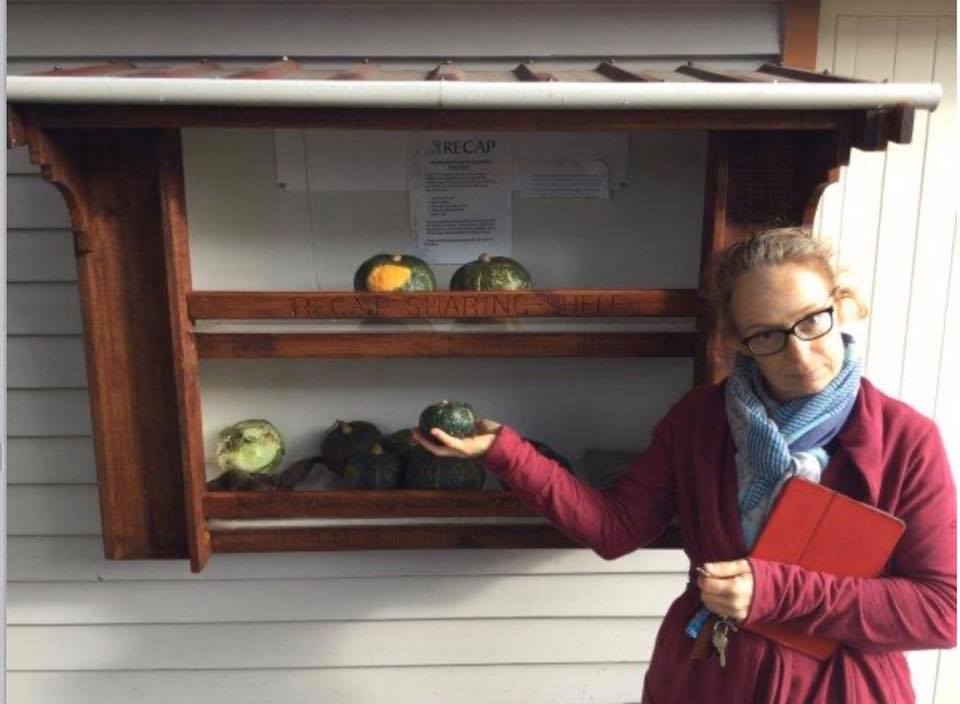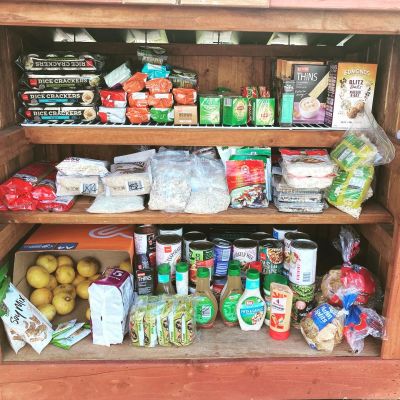About Pātaka Kai
Pātaka Kai is the Māori term for a food storehouse or basically a pantry.
Pātaka Kai are a space for people to leave what they can (excess garden produce and food for example) and for people to take what they need. This is not an exchange system, nor is koha required. Pātaka Kai are open 24/7.
Palmerston North Pātaka Kai
53 Waldegrave Street, outside Te Hā i Hine-ahu-one Palmerston North Women’s Health Collective
https://www.facebook.com/pnwomenshealth
45 Ronberg Street, Highbury (outside a residential property.)
35 Monowai place, Westbrook. Here 2 Help Pantry
Community Fruit Manawatū, Horowhenua, Whanganui. 630 Featherston Street
St Matthews Church 109 College Street.
Awapuni and Te Patikitiki (Highbury) branches of the Palmerston North City Library have sharing shelves inside the libraries.
Jireh Food Hub 199 Ferguson Street. There is a sharing pantry on the front of the property. Please note that the garden is not open to the public.
Ashhurst. The RECAP Sharing Shelf, behind Ashhurst Library, 64 Bamfield St, Ashhurst. (Fresh produce and seedlings only.)
*Please let us know of any not listed here so we can keep the directory up to date.*


Tips for making produce sharing tables effective
1. Make sharing tables as routinely and frequently accessible as possible, so that, when people make the effort to visit, the tables are available. If possible, make tables available around-the-clock or, if they are indoors, have them available during all of a building’s open hours.
2. Place sharing tables in the public eye, with sufficient information that people know what is and is not welcome. (Produce? Plants? Gardening magazines? Pots? Seeds?)
3. Consider how you will deal with unwanted goods that might be ‘shared’. Be aware that untended problems (e.g. vandalism and dumping) attract repeats. Consider ways to increase shared community ownership, including awareness-raising regarding the table’s purpose, volunteer involvement, and participatory neighbourhood art to decorate the table.
4. If possible, choose a location where it is easy for a person or group to provide oversight. For example, a willing homeowner might place a table on their lawn facing a publically accessible sidewalk, or a client-oriented organisation or business might place a table on their front doorstep.
5. Identify a volunteer who can keep an eye on the table and who is willing to separate large batches of produce (e.g. a whole box of plums) into smaller batches so that people take a family-sized share.
6. Join existing communities by honouring how people are already using spaces. Make use of well-frequented areas and people flows (e.g. foot traffic) to bring people by the table, but don’t block any current use of a social space.
7. Be clear on your purposes. If sharing produce and being inclusive are your top priorities, make sure everyone involved understands this and what it might mean for secondary purposes. Below are examples.
a. Is there a koha box attached? Even if you add a koha box, don’t make it the focus or you’ll get distracted by the possibility that it might be stolen, or by an expectation that people contribute. Instead, let the sharing table be about ways of giving and receiving that don’t fit our culture’s dominant understanding of exchange.
b. If part of the kaupapa is feeding food-insecure people, don’t make poverty an explicit focus or you will may create a stigma that reduces uptake. Instead, build community in ways that welcome everyone. Those who are hungry will be included along with everyone else.
c. Is the sharing table connected to a community garden of some sort, such as a sharing garden? If some garden plants are set aside for particular purposes, put some educating information around them; accept, however, that not everything will go according to plan. Someone will weed out the puha, or harvest an over-ripe kamo kamo that has been left for seed. Make people the top priority and everyone can learn and try again next season.
8. Publicise the sharing table. Find a way to keep the table and its culture of use in the public eye. Post what is available on social media.
9. Consider how you will move produce before it spoils. Connections to other organisations that distribute food can help in the case of a glut. As a last resort, knowing where to find a nearby compost pile can take care of that last rotting apple. Volunteers that are actively maintaining a table can be encouraged to use anything left over, even in quantity (e.g. for preserving).
Pataka Kai have resources and a directory if you would like to run your sharing-site as a Pataka Kai. They also have some useful guidelines:
